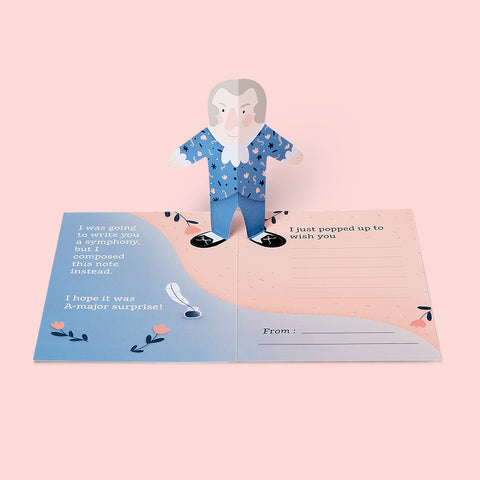Aren’t greeting cards amazing? Just a single fold, a clever illustration and some kind words can make us feel all warm and fuzzy inside. That’s why we’re looking back at the rich history of greeting cards. From sketches on scarabs to the world’s first Christmas card, we hope it inspires you to pop a little playfulness in the post.
Symbols of affection
The practice of gifting a special message is not a new phenomenon. Humans have been making little mementos to mark important occasions, such as the start of a new year, for centuries. Some sources suggest the earliest examples can be found on the clay tablets of Ancient Sumer, others refer to the papyrus notes and specially inscribed scarabs of the Ancient Egyptians.
The write idea
It wasn’t until the invention of the printing press in 1450, plus the arrival of Britain’s Penny Post in 1840, that sending a cheerful paper greeting was finally affordable by all. The world’s first commercially printed Christmas card was designed here in England by John Callcott Horsley for Sir Henry Cole (the first director of the V&A) in 1843. It featured a group of friends celebrating the holiday season over a glass of wine – including a baby, which Smithsonian Magazine suggests caused quite the stir. Apparently, the Temperance Society thought it would encourage underage drinking.
![An Old Christmas Card by Louis Prang]()
A Christmas card by Louis Prang
Sent from heaven
Since that first commercial Christmas card, seasonal greetings have been adorned with all kinds of wonderful illustrations, the most popular being a Hallmark card featuring three angels praying. It was created in the 1970s and has reportedly sold over 33 million copies.

A Greeting Card from 1881
Finding your lobster
For some, February 14th is a day filled with excitement and anticipation, for others, it’s just another commercial holiday. Interestingly, the world’s oldest Valentine was composed in the Tower of London. It was a poem written in 1415 by the imprisoned Duke of Orléans to his wife – today, you’ll find it in the British Library. The practice of sending Valentine’s Day cards also took off with the Penny Post, and soon people began including artistic flourishes and luxurious lace paper in their designs. One bizarre idea from around 1860 featured a lobster surrounded by lace with the caption, “A lobster in love”, which then lifted to read, “I have a lady in my head”. We can’t make head or tail of it, but the Museum of London thinks it might a reference to the shape of cooked lobster meat.
Just popped up to say…
As sending thoughtful notes became more affordable, people had (excuse the pun) carte blanche to play with the format. Pop up greeting cards were inspired by ‘moveable’ books, such as those of Lothar Meggendorfer, an illustrator and paper engineer born in 1847. According to EHow, “He was known for making books with pages that unfolded into panoramas, pop ups and mechanical pull tabs”. The Victorians soon began making their own pop up cards with doors, shutters and moving parts.
It seems that throughout the history of greeting cards, people have been coming up with new and creative ways to send a smile – and we’re continuing that tradition today. Discover how you can send some laughter through the letterbox with our collection of pop up greeting cards.
ChattyFeet brings more funny moments into your day with illustrated sock characters. Browse our collection of cool socks.














